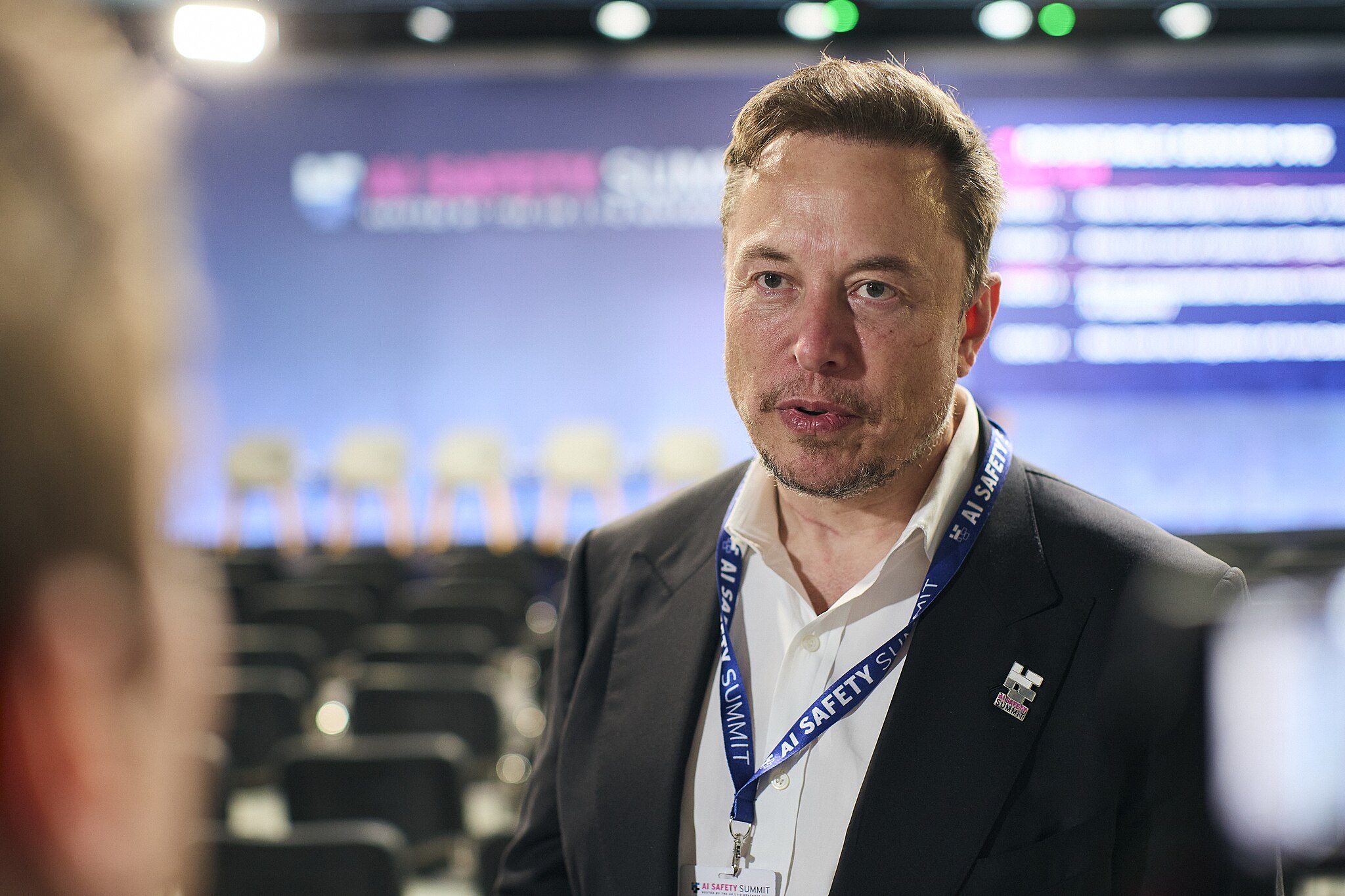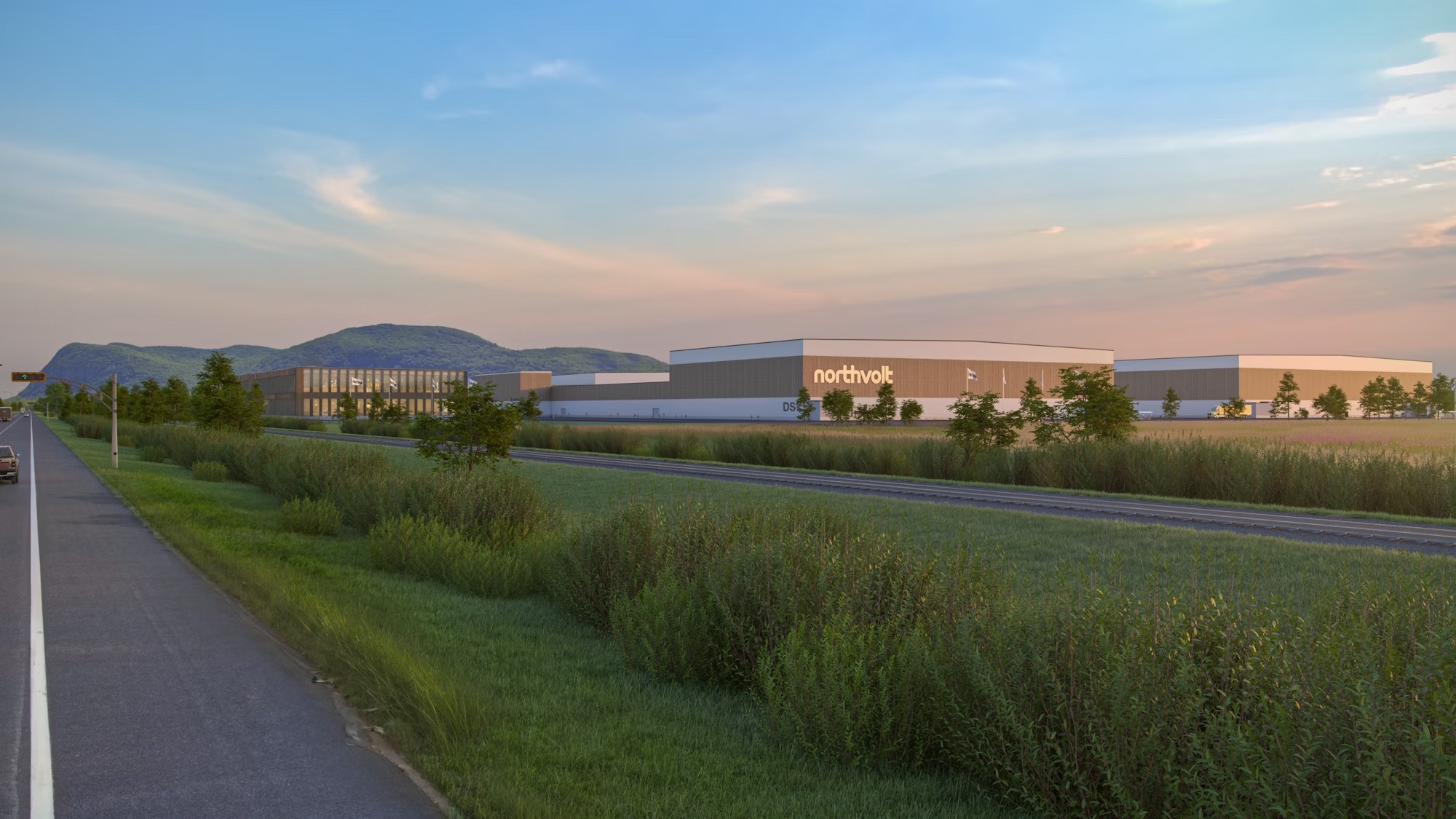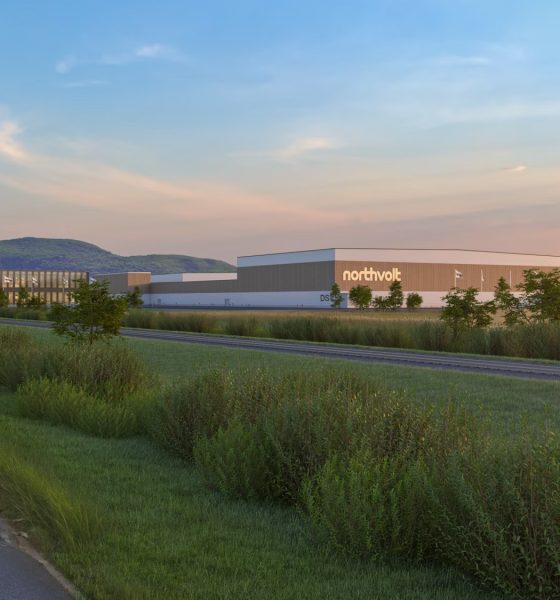Northvolt Six is investing in a battery manufacturing plant in Canada.
“Since we founded Northvolt seven years ago, we have pursued one goal: to establish a new sustainable model for battery manufacturing. Today, we are expanding Northvolt’s ambitions in Canada,” said CEO and co-founder of Northvolt Peter Carlsson.
Northvolt’s new battery plant will be located in Saint-Basile-le-Grand and McMastrville, a suburb in Quebec, Canada. It will be a fully integrated facility, manufacturing cathode active material on-site, produce batteries, and recycle cells.
The Northvolt facility will focus on producing lithium-ion battery cells. The company aims to have an annual cell production capacity of 60 GWh. For the first phase of the project, Northvolt targets reaching up to 30 GWh of capacity. Construction on the facility’s first phase will begin by the end of 2023. The first battery cells produced at the Quebec factory are expected to be delivered by 2026.
Northvolt’s new battery factory in North America will receive financial support from Canada and Quebec’s governments. The project’s first phase will require a total investment of USD$5 billion.
“The potential of Northvolt Six is enormous, not only to rapidly develop our capacity to deliver sustainable batteries to the North American market but also to accelerate the emergence of Quebec as a key player in the global energy transition.
“With its unique access to 100% renewable energy and raw materials, we consider Quebec to be the ideal base of operations for Northvolt’s first gigafactory outside of Europe. We look forward to collaborating with all local stakeholders and the province to make Northvolt Six an example of sustainable investment,” stated North-volt co-founder Paolo Cerruti.
Cerruti will lead the project in Canada. He will be the CEO of Northvolt in North America.
The facility in Canada will be the Sweden-based company’s first factory outside Europe. Northvolt has been steadily expanding its reach in Europe. In December 2021, it built its first lithium battery cell, and by mid-2022, it announced a €4 billion battery factory in Germany. In July 2022, Northvolt partnered with Volkswagen, Volvo, Fluence Energy, and Scania Trucks to expand its manufacturing facility.
The Teslarati team would appreciate hearing from you. If you have any tips, contact me at maria@teslarati.com or via X @Writer_01001101.

News
NVIDIA Director of Robotics: Tesla FSD v14 is the first AI to pass the “Physical Turing Test”
After testing FSD v14, Fan stated that his experience with FSD felt magical at first, but it soon started to feel like a routine.

NVIDIA Director of Robotics Jim Fan has praised Tesla’s Full Self-Driving (Supervised) v14 as the first AI to pass what he described as a “Physical Turing Test.”
After testing FSD v14, Fan stated that his experience with FSD felt magical at first, but it soon started to feel like a routine. And just like smartphones today, removing it now would “actively hurt.”
Jim Fan’s hands-on FSD v14 impressions
Fan, a leading researcher in embodied AI who is currently solving Physical AI at NVIDIA and spearheading the company’s Project GR00T initiative, noted that he actually was late to the Tesla game. He was, however, one of the first to try out FSD v14.
“I was very late to own a Tesla but among the earliest to try out FSD v14. It’s perhaps the first time I experience an AI that passes the Physical Turing Test: after a long day at work, you press a button, lay back, and couldn’t tell if a neural net or a human drove you home,” Fan wrote in a post on X.
Fan added: “Despite knowing exactly how robot learning works, I still find it magical watching the steering wheel turn by itself. First it feels surreal, next it becomes routine. Then, like the smartphone, taking it away actively hurts. This is how humanity gets rewired and glued to god-like technologies.”
The Physical Turing Test
The original Turing Test was conceived by Alan Turing in 1950, and it was aimed at determining if a machine could exhibit behavior that is equivalent to or indistinguishable from a human. By focusing on text-based conversations, the original Turing Test set a high bar for natural language processing and machine learning.
This test has been passed by today’s large language models. However, the capability to converse in a humanlike manner is a completely different challenge from performing real-world problem-solving or physical interactions. Thus, Fan introduced the Physical Turing Test, which challenges AI systems to demonstrate intelligence through physical actions.
Based on Fan’s comments, Tesla has demonstrated these intelligent physical actions with FSD v14. Elon Musk agreed with the NVIDIA executive, stating in a post on X that with FSD v14, “you can sense the sentience maturing.” Musk also praised Tesla AI, calling it the best “real-world AI” today.
News
Tesla AI team burns the Christmas midnight oil by releasing FSD v14.2.2.1
The update was released just a day after FSD v14.2.2 started rolling out to customers.

Tesla is burning the midnight oil this Christmas, with the Tesla AI team quietly rolling out Full Self-Driving (Supervised) v14.2.2.1 just a day after FSD v14.2.2 started rolling out to customers.
Tesla owner shares insights on FSD v14.2.2.1
Longtime Tesla owner and FSD tester @BLKMDL3 shared some insights following several drives with FSD v14.2.2.1 in rainy Los Angeles conditions with standing water and faded lane lines. He reported zero steering hesitation or stutter, confident lane changes, and maneuvers executed with precision that evoked the performance of Tesla’s driverless Robotaxis in Austin.
Parking performance impressed, with most spots nailed perfectly, including tight, sharp turns, in single attempts without shaky steering. One minor offset happened only due to another vehicle that was parked over the line, which FSD accommodated by a few extra inches. In rain that typically erases road markings, FSD visualized lanes and turn lines better than humans, positioning itself flawlessly when entering new streets as well.
“Took it up a dark, wet, and twisty canyon road up and down the hill tonight and it went very well as to be expected. Stayed centered in the lane, kept speed well and gives a confidence inspiring steering feel where it handles these curvy roads better than the majority of human drivers,” the Tesla owner wrote in a post on X.
Tesla’s FSD v14.2.2 update
Just a day before FSD v14.2.2.1’s release, Tesla rolled out FSD v14.2.2, which was focused on smoother real-world performance, better obstacle awareness, and precise end-of-trip routing. According to the update’s release notes, FSD v14.2.2 upgrades the vision encoder neural network with higher resolution features, enhancing detection of emergency vehicles, road obstacles, and human gestures.
New Arrival Options also allowed users to select preferred drop-off styles, such as Parking Lot, Street, Driveway, Parking Garage, or Curbside, with the navigation pin automatically adjusting to the ideal spot. Other refinements include pulling over for emergency vehicles, real-time vision-based detours for blocked roads, improved gate and debris handling, and Speed Profiles for customized driving styles.
Elon Musk
Elon Musk’s Grok records lowest hallucination rate in AI reliability study
Grok achieved an 8% hallucination rate, 4.5 customer rating, 3.5 consistency, and 0.07% downtime, resulting in an overall risk score of just 6.

A December 2025 study by casino games aggregator Relum has identified Elon Musk’s Grok as one of the most reliable AI chatbots for workplace use, boasting the lowest hallucination rate at just 8% among the 10 major models tested.
In comparison, market leader ChatGPT registered one of the highest hallucination rates at 35%, just behind Google’s Gemini, which registered a high hallucination rate of 38%. The findings highlight Grok’s factual prowess despite the AI model’s lower market visibility.
Grok tops hallucination metric
The research evaluated chatbots on hallucination rate, customer ratings, response consistency, and downtime rate. The chatbots were then assigned a reliability risk score from 0 to 99, with higher scores indicating bigger problems.
Grok achieved an 8% hallucination rate, 4.5 customer rating, 3.5 consistency, and 0.07% downtime, resulting in an overall risk score of just 6. DeepSeek followed closely with 14% hallucinations and zero downtime for a stellar risk score of 4. ChatGPT’s high hallucination and downtime rates gave it the top risk score of 99, followed by Claude and Meta AI, which earned reliability risk scores of 75 and 70, respectively.

Why low hallucinations matter
Relum Chief Product Officer Razvan-Lucian Haiduc shared his thoughts about the study’s findings. “About 65% of US companies now use AI chatbots in their daily work, and nearly 45% of employees admit they’ve shared sensitive company information with these tools. These numbers show well how important chatbots have become in everyday work.
“Dependence on AI tools will likely increase even more, so companies should choose their chatbots based on how reliable and fit they are for their specific business needs. A chatbot that everyone uses isn’t necessarily the one that works best for your industry or gives accurate answers for your tasks.”
In a way, the study reveals a notable gap between AI chatbots’ popularity and performance, with Grok’s low hallucination rate positioning it as a strong choice for accuracy-critical applications. This was despite the fact that Grok is not used as much by users, at least compared to more mainstream AI applications such as ChatGPT.










